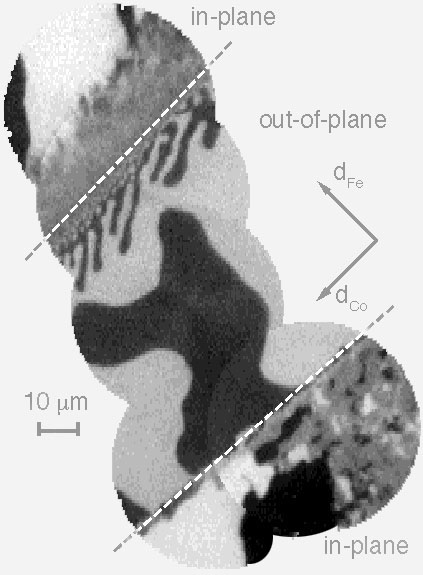
The preferred direction of magnetization in a Fe/Co/Ni trilayer, grown epitaxially on Cu(001), changes twice as a function of the Fe overlayer thickness: Without Fe, the magnetic easy axis of 2.4-3.6 ML Co/15 ML Ni/Cu(001) is in the film plane (bottom part of image). Above 0.6 ML Fe it becomes out-of-plane, and stays out-of-plane until the Fe thickness reaches ≈1.8 ML Fe (middle part of image). Above 1.8 ML Fe thickness it is again in-plane (top).
The image shows magnetic domains at the Co-L3 edge of an Fe/Co crossed double wedge on 15 ML Ni/Cu(001). Fe and Co thickness gradients are indicated by arrows. Within the imaged area the Fe thickness varies from 0 to 2.5 ML, the Co thickness from 2.4 to 3.6 ML.
The dashed lines
indicate the so-called spin-reorientation transitions between these
regions. Domain branching into smaller and smaller stripe domains is
observed below the upper line.
This is attributed
to the competition between the magnetostatic energy and the energy
cost for creating domain walls. Closely spaced up and down magnetized
out-of-plane domains have a lower magnetostatic energy, but a higher
domain wall energy. Close to the spin-reorientation transition the domain
wall energy is low, so that more domains can be formed to gain magnetostatic
energy.
It is not clear
why such a domain branching does not occur at the lower spin reorientation
transition; kinetic barriers for the formation of the domains could
be responsible for that.